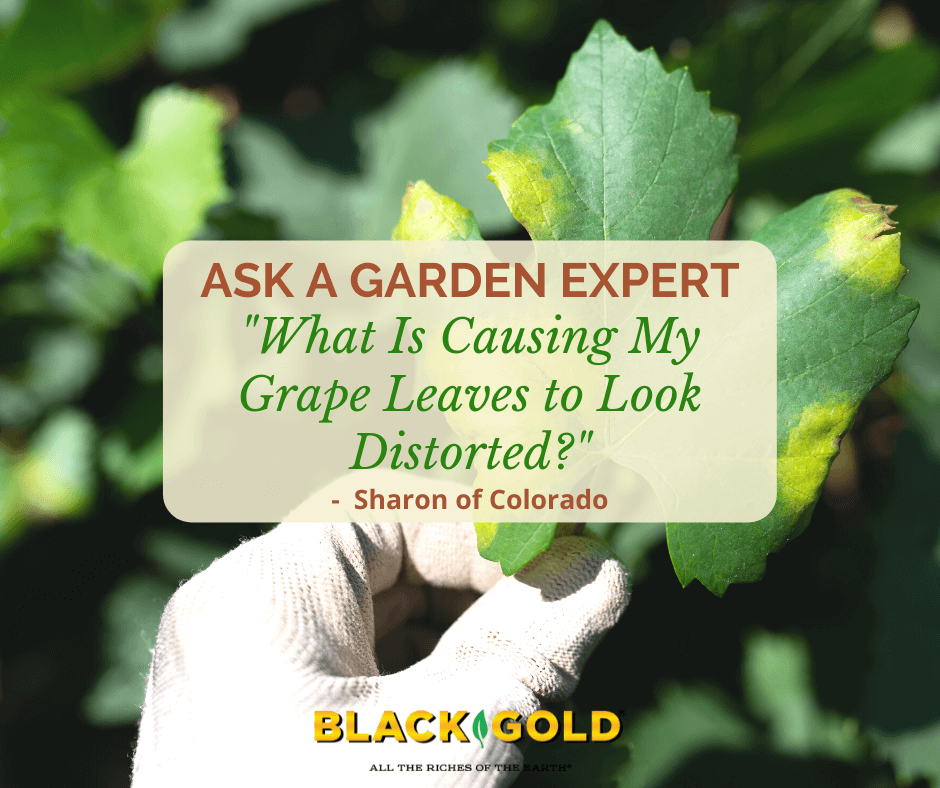“I have a St.Theresa grapevine that has grown and produced very well. After being devastated by Japanese beetles last year, it developed several distorted leaves. Is it possible the Japanese beetles gave it some virus or disease? I cut it way back. Now, this spring, it has been making a comeback. But I noticed yesterday that some of the leaves at the ends of the new growth look distorted and discolored again. They look like the pictures of Eutypa Dieback. Help! What do I do?” Sharon of Colorado
Answer: Japanese Beetles (Popillia japonica) have been reported to vector some bean viruses, but there is no report or research to support that they spread any diseases of grape (Vitis vinifera). What is more likely is that your vines were weakened by the damage, left more prone to infection, and they obtained a disease. Other grape pests, such as mites, also spread grape diseases and they could have been the vestors. Either way, there are several grape diseases that can cause leaf distortion and discoloration. Here are some possible foliar grape diseases along with identification tips and management suggestions.
Grape Foliar Diseases That Cause Distortion
- Grape Anthracnose (Elsinoe ampelina, fungal) causes symptoms on both leaves and fruit. Foliage will appear spotted and have brown lesions that cause leaves to curl. The grapes also develop dark lesions. Apply a Bordeaux mixture spray or Liquid Copper Fungicide to infected vines when they are dormant.
- Eutypa dieback (Eutypa lata, fungal disease): Leaves can appear stunted, curled, and cupped. It is easily identified by cutting a stem: infected wood will have a wedge of darker, discolored wood against healthy, lighter wood. It infects older vines that are over five years of age. There is no known cure, so infected vines must be removed.
- Viral Diseases: There are many viral diseases of the grape that cause leaf distortions. (Click here for a visual guide of grape viral diseases.) All are incurable, so I recommend removing any vines that you are certain are infected with a viral infection.
Getting outside help is my ultimate recommendation. The best way to firmly identify your grape disease is to send a sample to your local extension agent and have it tested in a lab. (Please click here to search for your local extension agent!) Definitive results are necessary because you do not want to destroy your grape if it has a curable disease.
I hope that these tips help!
Happy gardening,
Jessie Keith
Black Gold Horticulturist


